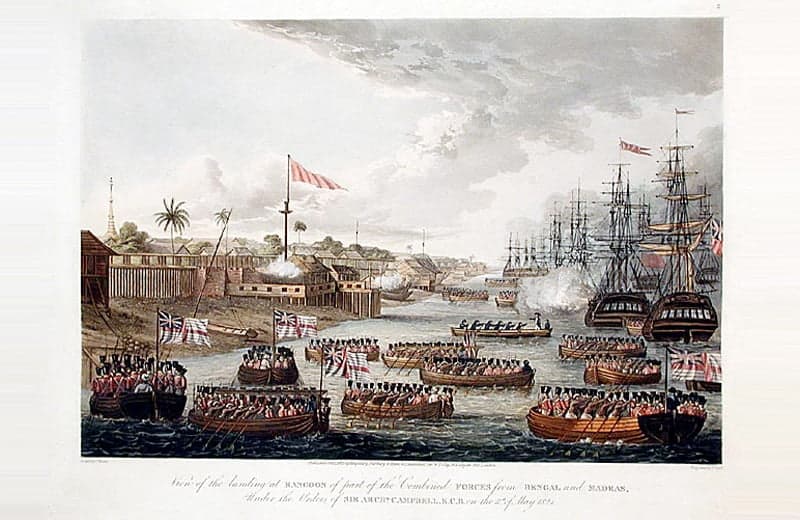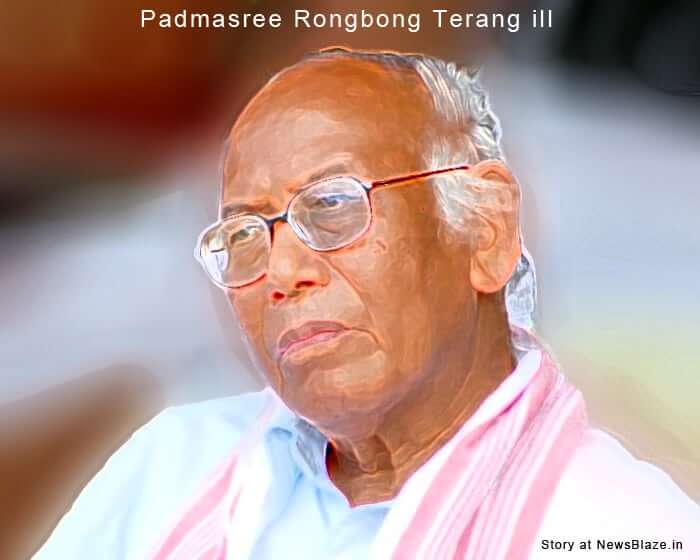Diphu May 7, 2023: In the approaching month of March next year (2024), the first Anglo-Burmese war completes two hundred years from its occurrence. It was a militaristic response to the Burmese expansionist campaigns in Assam, Arakan, Manipur, and Cachar by armies of the East India Company.
First Anglo-Burmese War
It was fought on three fronts, up the Brahmaputra Valley to the Bisa area adjoining Burma (now Myanmar), up through Cachar to Manipur, and a maritime and terrestrial campaign from Rangoon to Yandabo. It concluded with the signing of the famous Treaty of Peace and Friendship of Yandabo signed on the 24th of February 1826. Article (ii) therefore helped in annexing the Ahom Territory, the petty states of Cachar and Jaintia.
For the Burmese, the conditions of the Treaty were too humiliating and mortifying. They had to cede the territories of Assam, Jaintia, and Cachar. Further, they had to recognize Manipur as part of the territory won by the East India Company; furthermore, they lost the four maritime zones of the Kingdom of Ava.
The economic and financial terms were too punishing. The four installments demanded a sum of one million Pounds Sterling in total. The first part had to be paid immediately, the second one a month later without which the East India Company would not leave the territory, and so on. It broke the back of Ava’s economy and paved the way for the signing of a Commercial Treaty between the warring sides.
The victorious British side incurred the cost of the war to the tune of five million pounds sterling: the costliest war during the colonial period of India which left an indelible impact on the economy. It almost cost the position of the incumbent Viceroy of India; the casualties of the war on the victorious side were mostly inflicted by tropical diseases and insect infestations.

May 1824 amphibious assault by East India Company forces on Rangoon. Painting by J.Moore 19th century. Reproduction. (public domain)
Books
Books such as Making of Modern Burma, Royal Orders of Burma, Life in Assam during the 19th Century, Military Operations in Assam, and First Anglo-Burmese War throw sufficient perspectives from both warring sides.
As the political landscape of Bengal went out of the hands of the weakening Moghul administration, gradually, the Ahom rule too got into a similar pathway within a century. The king of Ava had imperialistic designs over the Ahom Kingdom that proved to be counterproductive.
The British, having lost the lucrative trade routes to Tibet during the Anglo-Nepalese war, wanted an alternative through the territory of Bhutan. Resources can be under competitive pressure. The Royal Burmese Order (second one), dated 15th September 1820; is quite clear about the Ahom kingdom being considered as a part of the kingdom of Ava.
The first order relates to the taking over the charge of the inner bodyguards of the King, all six branches by the Mingyi Maha Min His Kyaw Thu, Lord Mya Daung. Chandra Kanta Singha was installed as the King of the Ahom Kingdom while Badan Barphukan became his deputy. As recognition of Burmese Suzerainty, he sent 500 elephants as a tribute to the Burmese king with his daughter as a Royal Bride. The Burmese envoys were also given titles and other royal gifts.
King of Ava
However, the King of Ava was a keen observer and sent many of his sources into the espionage business. His spies were in the courts of Tipu Sultan, the King of Nepal, Moghul Durbar, and others. He even engaged a Eurasian or a British subject to teach English to his sons.
An intelligence report reaching him said, “Only the flag of the East India Company flies on the Coromandel Coast.” Noting the Burmese overtures, the Company posted David Scott, an agent of the same, to ‘Rungpore.’ Soon, he would take the opportunity of the geographical location of a small salt trading town named Goalpara. He made this into a District before the first Anglo-Burmese War broke out.
If there was large-scale mayhem, murder, plunder, pillaging, and atrocities during the Burmese-occupied Ahom kingdom; the nearby princely state fared no better for a longer period. Tensions along the Arakan/Bengal Boundaries developed which would be a precursor to the First Anglo-Burmese War. The supremacy of the French led to the thought that the party may align with the king of Ava.
Dimasa Kingdon Problems
The displaced Manipuris making a bee-line to Cachar created problems for the king of the Dimasa Kingdom there.
The Royal Burmese Order is again explicit around this time about the Ahom Kingdom: “22 February 1823 Order: Assam as part of the Burmese kingdom would be protected by Burmese forces, but the Burmese officers in Assam should be aware of the fact that not only the defense but also the administrative side of their duty there is also very important.
The king and ministers of Assam also petitioned for sending new officers; Min Gyi Maha Thilawa, Sitke Regimental Officers, and Nagan- Liaison Officers shall return to the capital and the following are appointed to designations in Assam mentioned against their names: … Geographical features such as the mountain passes in the Patkai Bum areas played a vital part in the ingress of supply of army personnel and the Zingpaw levies through the northern part into the plains of the Brahmaputra River.
Requests For British Interventions
The requests from Assam and Cachar for British interventions were met positively. And the responders were quick to declare Cachar and Jaintia as protectorates. Thus began the War. With the signing of the Treaty of Yandabo; although without the representatives of the ceded areas, the threat perceptions of the Bhutanese altered.
The process of annexation of Assam took a long time (1826-1856); after a decade, the Duars would be annexed following the Treaty of Sinchu-La. As the landscape of Assam would be shaped under a separate Commissioner in 1874; colonialism would sail on until 1947.




